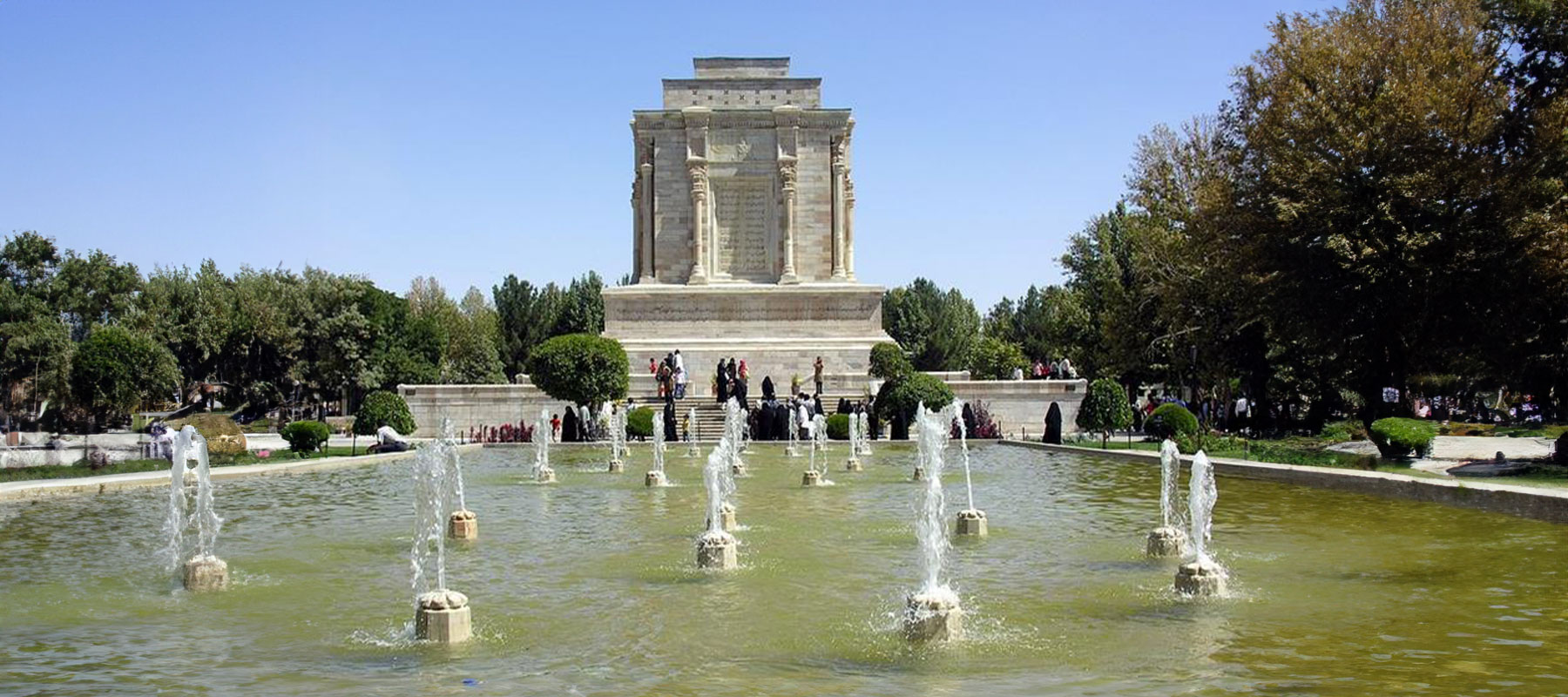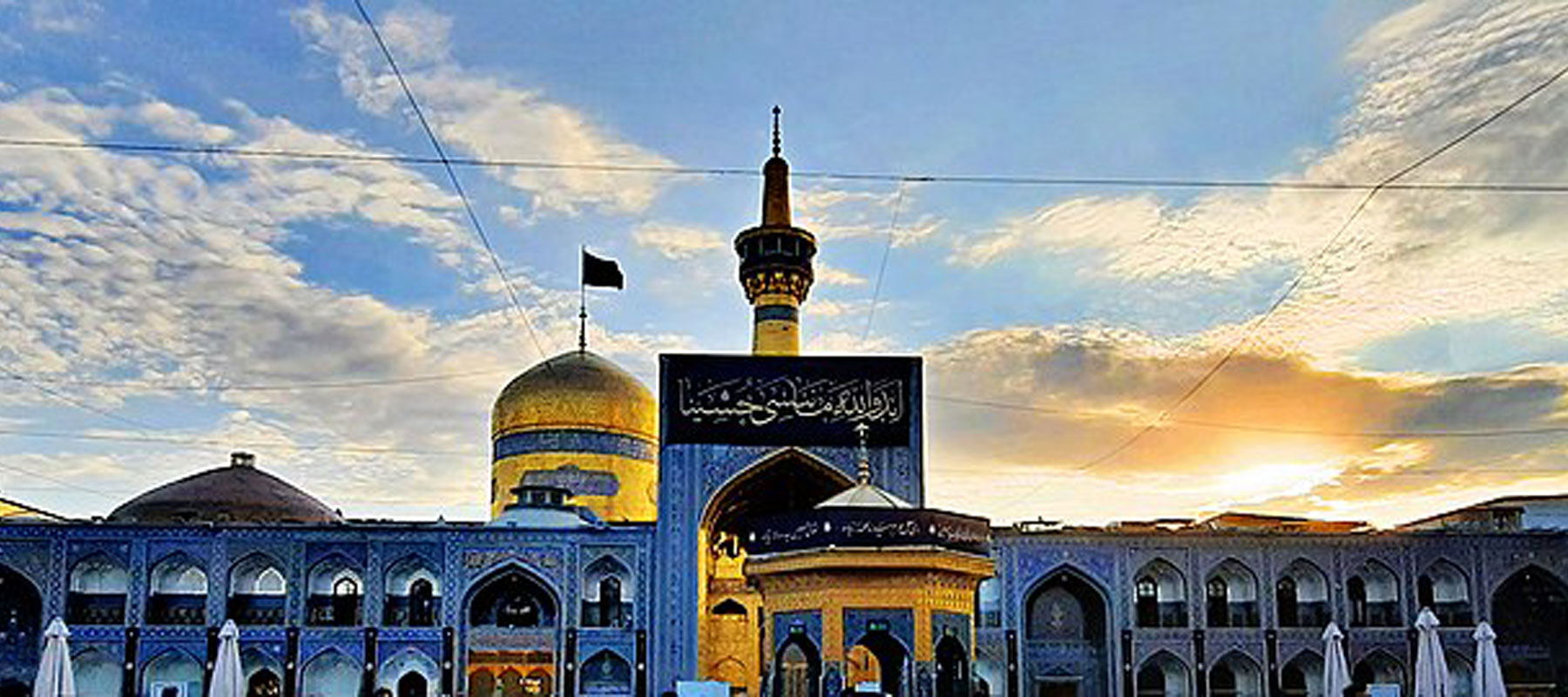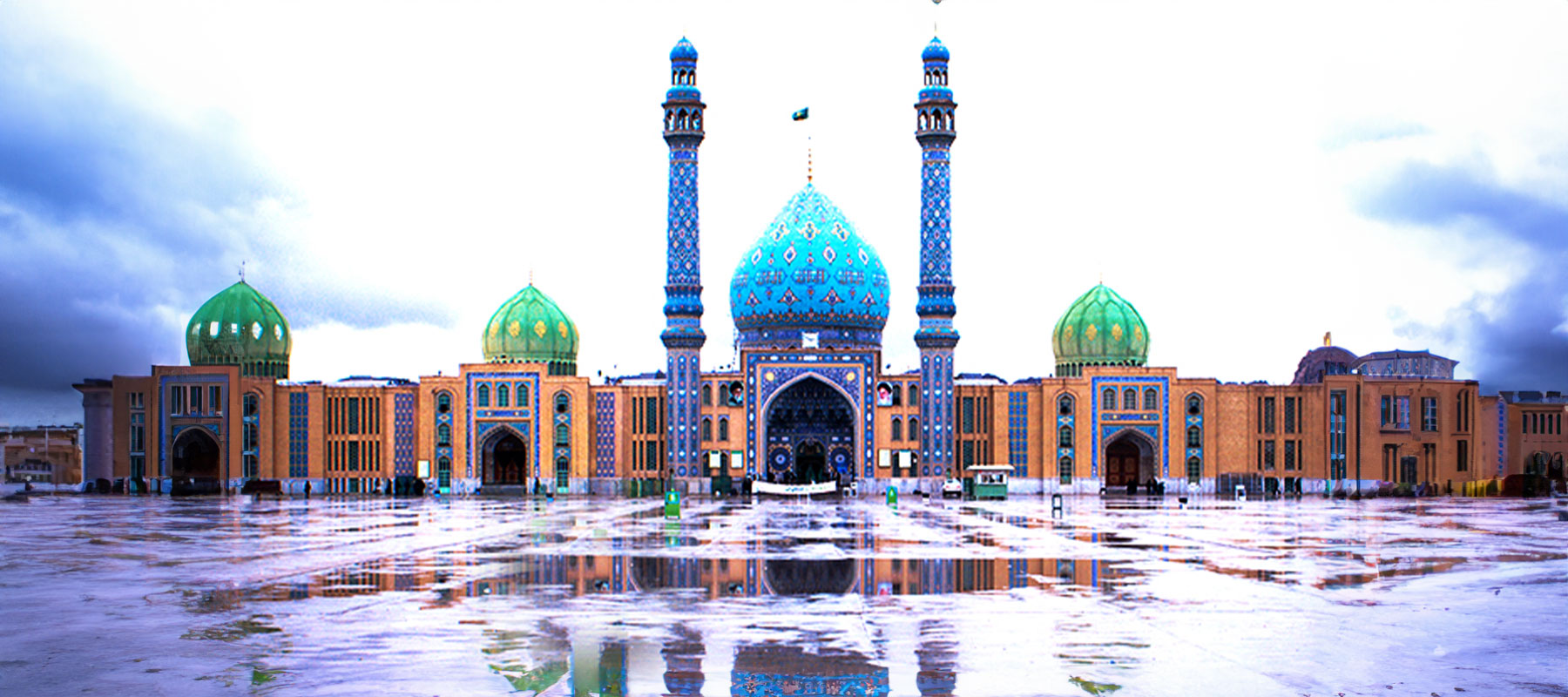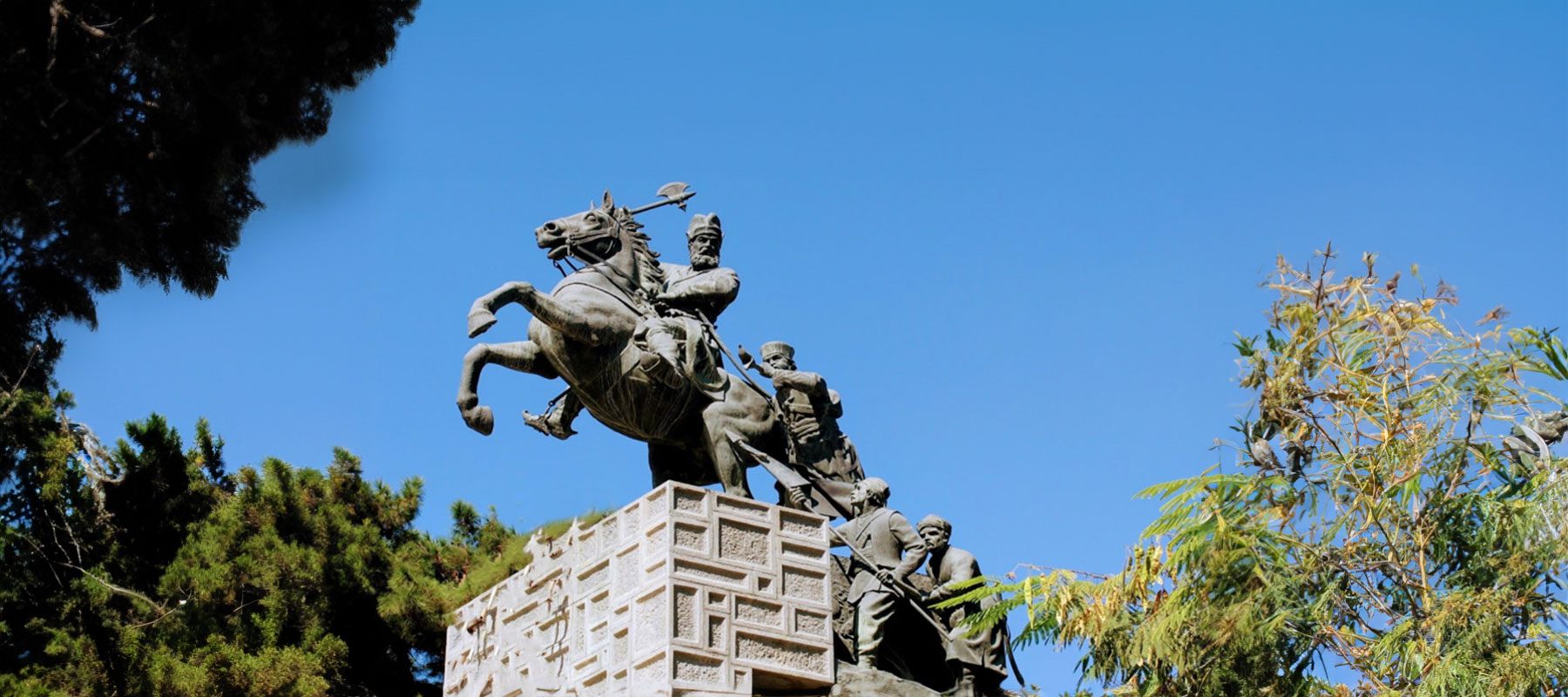
Why should we visit the tomb of Ferdowsi?
This mausoleum serves as the final resting place for our nation's eminent poet, Ferdowsi. He was a highly revered poet who dedicated relentless efforts to safeguarding the Persian language. Adjacently, the burial site of the Saadi brothers graces the garden of this tomb. Within this compound, there lie excellent prospects for indulging in pleasant pastimes and diversions, allowing you to savor delightful moments. In essence, it would be unfortunate to overlook this most poetic of locations amidst Mashhad's attractions.

The history of Ferdowsi's tomb
The history of Ferdowsi's tomb, situated in the city of Tus near Mashhad, is a tale marked by various chapters of change and restoration. Upon Ferdowsi's passing, his Shia faith prevented him from traditional burial sites, leading to his interment within his own garden. Despite the absence of a formal tomb, admirers and lovers of poetry continued to visit his resting place.

In time, a tomb was constructed by a Ghaznavid military leader, standing for around a century. However, the tumultuous era of Genghis Khan's invasion brought devastation, leaving the mausoleum in ruins. Following the aftermath of the First World War, a fitting structure emerged as a gesture of appreciation for Ferdowsi. Remarkably, this tomb was erected through the contributions of the people, reflecting their deep reverence for his legacy.
Architecture of Ferdowsi's Mausoleum
For the construction of a garden tomb in Toos, a competition was envisioned, resulting in the design of this mausoleum. However, after initial execution of the selected design, work was halted and a different plan resembling the pyramids of Egypt was put into motion. Several pauses and revivals ensued until a staircase-ceiling structure was eventually approved. The mausoleum's structure stood at a height of 18 meters, with the tomb placed at its center. A precious marble stone was placed on the tomb, raised one meter above the floor. Additionally, a 40-meter ivan surrounded the building.

The complex's ceiling was adorned with mosaic and intricate patterns. The tomb and ivan were crafted from cement and iron, while depictions from the Shahnameh (Book of Kings) were carved onto the walls by skilled stonemasons. Following persistent efforts, the mausoleum was finally inaugurated during Ferdowsi's millennial celebration in 1313. After a period, the structure suffered damage due to moisture, leading to a restoration project that aimed to preserve its visual attributes, concluding in 1347.

This time, the construction utilized durable and high-quality materials. The new structure was supported by 24 columns on the first floor and 8 columns on the second. Exterior embellishments were executed with the same stones from the previous construction, and the interior was adorned with marble. The outer façade also resembled the previous design. The mosaic tiles drew inspiration from the Achaemenid era. The stone of Ferdowsi's tomb and the carving of Frouhar's image are among the heaviest stones in this ensemble, renowned worldwide for their four-ton weight. If you wish to behold this beautiful and visually captivating place and escape the urban bustle for a moment, explore the flight ticket section for Mashhad on the travel market search engine to view all prices at once.
Ferdowsi's mausoleum complex encompasses several sections that add depth and richness to the experience of visitors:
1. Entrance Pool: Upon entering the complex, a reflecting pool captures the image of the mausoleum, creating a serene ambiance.
2. Hall:This marble-clad hall features intricate mosaic and stucco decorations. It includes four tall columns and two large corner columns. At the top, a sculpture of a robust man (Frouhar) reminiscent of the Persepolis throne stands out. The covered staircase courtyard is paved with marble, adorned with inscriptions of Ferdowsi's verses.
3. Ferdowsi Museum: The museum showcases stone artifacts from the plains of Toos, including pottery from pre-Islamic and Islamic eras, as well as gold and silver coins. Various pottery vessels, glazed and unglazed, along with unfired clay artifacts, are on display. The museum also houses gifts such as painted portraits of Ferdowsi's face from Shahnameh stories, carpets, and rugs.
4. Ferdowsi Library: Located on the eastern side, the library boasts an exquisite carpet and houses around 9,000 books. The upper level serves as a study hall, while the lower level functions as a book repository.
5. Mehdi Akhavan Sales Mausoleum: Within the complex, you'll also find the mausoleum of Mehdi Akhavan Sales, another celebrated artist. A statue of his half figure is installed beside it.
6. Stone Engravings: Prominent stone engravings from the Shahnameh are displayed on the south and east walls of the hall. These engravings depict scenes from Ferdowsi's epic, such as Zal seeking refuge with the Simurgh, battles between Rostam and various creatures, and other iconic moments from the Shahnameh narrative.
These sections together create an immersive experience that not only pays homage to Ferdowsi's legacy but also offers a glimpse into the rich history and artistry of the region.
Practical Details for Your Visit to Ferdowsi's Tomb
When preparing for a visit to Ferdowsi's tomb, here are some practical considerations to keep in mind:
1. Season: The best times to explore the Tos region, where Ferdowsi's tomb is located, are during the spring and autumn seasons. May and June, as well as October and November, offer pleasant weather and the chance to witness nature's beauty in full bloom.
2. Travel: To reach the region, consider using easily accessible train tickets that connect Mashhad to Tehran and other routes. Train travel can offer a comfortable and convenient journey.
3. Accommodation: While planning your visit, make sure to secure accommodation in advance, especially if you're visiting during peak seasons. Mashhad, being a significant city, offers various lodging options to suit different preferences and budgets.
4. Transportation: Once you arrive in Mashhad, you can use public transportation, city taxis, or other means to reach Tos and Ferdowsi's tomb. Research local transportation options and consider having a map or navigation app on hand to navigate the area.
5. Opening Hours: Check the opening hours of Ferdowsi's tomb and its associated museum and library. Planning your visit during their operational hours ensures you won't miss out on any part of the experience.
6. Cultural Etiquette:Remember that Ferdowsi's tomb is a place of cultural and historical significance. Show respect by dressing modestly and observing any cultural customs or rules associated with visiting religious and historical sites.
7.Local Cuisine: While in the region, consider sampling the local cuisine and exploring nearby attractions. The area's culinary offerings and cultural landmarks can enhance your overall experience.
8. Local Guides: If available, hiring a local guide can provide valuable insights into the history and significance of Ferdowsi's tomb and the surrounding area.

Accessing the Ferdowsi tomb complex involves a nominal entry fee for visitors. It's essential to be aware of the varying visiting hours that may change throughout the year. In the first half of the year, the complex opens its doors from 9 am to 5 pm, while in the latter half of the year, the visiting hours are adjusted slightly, spanning from 9 am to 4 pm. This flexibility ensures that regardless of the time of year, you'll have ample opportunities to immerse yourself in the rich heritage of Ferdowsi and his tomb complex. Planning your visit accordingly will allow you to make the most of your experience while respecting the opening hours and gaining insights into the legacy of this great Persian poet.
As you traverse the enchanting realm of Ferdowsi's tomb complex, it's a reminder of the profound impact of cultural icons. Just as Ferdowsi safeguarded the Persian language, Qaaph is here to support your needs. Whether you seek cultural enrichment, historical insights, or practical guidance, Qaaph stands as a companion on your journey. From the echoes of the past to the innovations of the present, Qaaph helps you for your needs.
Related Blog
09 Aug 2023 | Travel in Mashhad
Exploring the Imam Reza Shrine in Mashhad
Exploring the Imam Reza Shrine in Mashhad
10 Aug 2023 | Travel in Mashhad
Jewel of the Timurid Era Goharshad Mosque
Unveiling the Splendors of Goharshad Mosque
10 Aug 2023 | Travel in Mashhad
Naderi Museum - A Captivating Exploration of History, Art
Naderi Museum - A Captivating Exploration of History, Art, and Beauty



Comments
Total 0 comment in the post